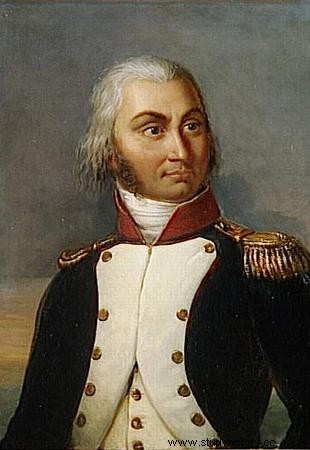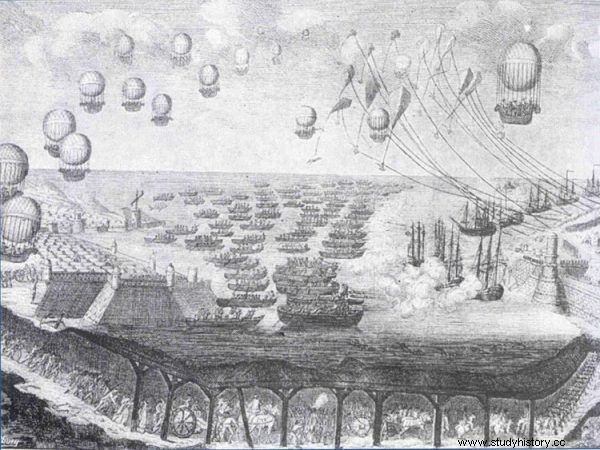Historians have been competing for two centuries in explaining Napoleon's final defeat. Some claim that the emperor was sick, others that he overslept or was simply tired. Against this background, the view of the famous British researcher, Andrew Roberts, stands out. In his opinion, Napoleon failed because he lacked ... air reconnaissance.
Do you think this is free jokes? No way. In order not to keep you in suspense any longer, let's go back to 1784. It was then that the still young Napoleon Bonaparte came to Paris for the first time in his life, watching the local newspapers celebrate a monumental technical achievement:the first balloon flight by the Montgolfier brothers.
The balloon is the basis
It was not just a useless curiosity. As soon as the French Revolution broke out, someone had the idea to use hot air balloons in war.

If Napoleon at Waterloo took the example of Jean-Baptiste Jourdan, who knows how the battle would have turned out.
The very first time a flying machine was used in battle brought amazing results. At Fleurus in Belgium (1794), General Jean-Baptiste Jourdan had a single reconnaissance balloon l’Entreprenant operated by the Aerostatic Corps.
Thanks to the observation from the air, he knew perfectly well the location and movements of the Austrian troops, which ensured him victory in this even, fifteen-hour fight. Interestingly, this match took place right next to ... the Belgian town of Waterloo.
In subsequent skirmishes, the French used balloons to transmit reports and messages over the heads of their enemies. l’Entreprenant it came in handy, for example, during the siege of Mainz in 1795. The idea also appealed to the British, who created their own balloon observation corps and that already ... in 1785!
When Napoleon came to power, he quickly saw the potential for an unusual invention. From 1803, preparations were made for ... balloon invasion of Great Britain ! The French Emperor hoped that he would transfer tens of thousands of soldiers to the other side of the English Channel with a fleet of balloons.

This is what the ... balloon invasion of Great Britain was supposed to look like!
Unfortunately, Sophie Blanchard (wife of balloon pioneer Jean-Pierre Blanchard), responsible for the air invasion project, cooled the ruler's enthusiasm, predicting that the invasion would not be successful due to too strong gusts of wind. Discouraged, Napoleon gave up any work on the military use of balloons. In addition, earlier - in 1798 - he disbanded the French balloon corps.
One balloon would be enough
What does all of this have to do with the Battle of Waterloo in 1815? Let me explain. According to Andrew Roberts, author of Napoleon and Wellington. A long duel ”, the exchange of information was the main failure during this clash. The reconnaissance on both sides was in a deplorable state.
Napoleon did not know what was happening a few kilometers away and made one mistake after another. The British historian writes that even a single balloon could:
let [Marshal] Ney notice Wellington's bluff (...), and Napoleon to discover that the Prussians after Ligny were retreating north to Wavre. (...). [Thanks to the balloons] Napoleon could see the appearance of the B body ülow and withdraw in good order in the early stages of the Battle of Waterloo.
Well, guessing, guessing, but who would have thought that air support could change the fate of the battle of the early nineteenth century? And one of the most important battles in the history of the world?
